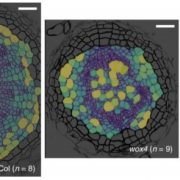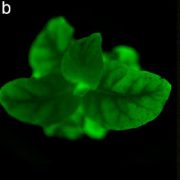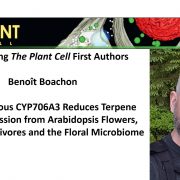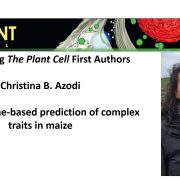
Transcriptional regulatory framework for vascular cambium development in Arabidopsis roots ($) (Nature Plants)
Plant Science Research WeeklyPlant vascular tissues continue to proliferate post-embryogenesis via the cambium, a lateral meristem. Until recently the transcription factors regulating meristem maintenance and promoting differentiation were still unknown. In this paper, Zhang et al. identified multiple transcription factors using…

Optimal levels of PLETHORA2 for root regeneration capacity (Cell Reports)
Plant Science Research WeeklyPlants can regenerate organs after damage, or even regenerate a whole plant. The regeneration efficiency is different across the organism. In this study, Durgaprasad et al. studied the factors that determine regeneration competence across Arabidopsis roots. They focussed on PLETHORA2 (PLT2), a gene involved…

Approaches to improve soil fertility in sub-Saharan Africa (J Exp Bot)
Plant Science Research WeeklyFood security is a major issue in sub-Saharan Africa, aggravated by rapid population growth and low soil fertility. Stewart et al. explore approaches to improve soil fertility, hence food production, in this region. They argue for a holistic approach that addresses not only yields, but also poverty reduction…

Viewpoint: The Poisonous Pollens, why do they exist? (New Phytol)
Plant Science Research WeeklyBesides being the carrier of male gametes in plants, pollen cells also unexpectedly contained some toxic properties that are collectively called “Pollen Defensive Compounds”. This raises the question: what is the evolutionary significance of these toxic compounds? In this Viewpoint by Rivest and…

Plant Science Research Weekly: October 25th
Blog, WWR Full PostReview: Interplay between turgor pressure and plasmodesmata during development
Plasmodesmata, small cytoplasmic channels connecting adjacent cells, allow small molecules to move and redistribute information and resources. Plasmodesmatal aperture is highly regulated, which is crucial to development…

Regulation of Pavement Cell Morphogenesis
Plant Physiology, Plant Physiology: On The InsideSimple plant cell morphologies, such as cylindrical shoot cells, are determined by the extensibility pattern of the primary cell wall, which is thought to be largely dominated by cellulose microfibrils, but the mechanism leading to more complex shapes, such as the brick-shaped or jigsaw-like patterns…

Recognizing Plant Cell first authors: Benoît Boachon
The Plant Cell, The Plant Cell: Author ProfilesBenoît Boachon, first author of A Promiscuous CYP706A3 Reduces Terpene Volatile Emission from Arabidopsis Flowers, Affecting Florivores and the Floral Microbiome
Current Position: Research associate, University of Lyon, UJM-Saint-Etienne, CNRS, BVpam FRE 3727, Saint-Etienne, France
Education: PhD…

How Carrots Get Their Colors
Plant Physiology, Plant Physiology: On The InsideCarrot (Daucus carota ssp. sativus) are classified into two groups: the carotene group (variety sativus) and the anthocyanin group (variety atrorubens). Carotene group members, also known as nonpurple carrots, accumulate massive amounts of carotenoids in their roots. Anthocyanin group members, also known…

Recognizing Plant Cell first authors: Christina B. Azodi
The Plant Cell, The Plant Cell: Author ProfilesChristina B. Azodi, fist author of Transcriptome-based prediction of complex traits in maize
Current Position: Ph.D. candidate in the lab of Dr. Shin-Han Shiu at Michigan State University, MI, USA. Starting post-doctoral research associate position in November under Dr. Davis McCarthy at St. Vincent’s…

